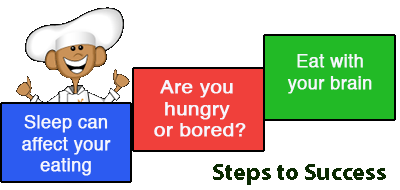
In dealing with adults in my practice who want to lose weight, the most common reason that I hear for why people are overweight is that they do not understand portion sizes. If this is true of adults, it is certainly true of children.
The confusion over how much to eat might get started like this:
This behavior teaches children to override their natural satiety sensors and to expect that being full means being stuffed. Many times children are working hard to finish large portions of food because they want to earn a “treat” at the end of their meal. How often have you said, “You can’t have dessert unless you finish all your food?” Parents are worried that children will be malnourished, so they bribe them with dessert to eat more than is needed.
Parents need not worry about children becoming malnourished. Studies have shown that children exposed to a variety of fresh, whole foods, will eat a balanced diet. If they eat a bit less on one day, they will make it up the next.
 Parents can help their children develop their natural tendency to eat well by offering appropriately sized portions of a wide variety of foods. The “Guide to Estimating Serving Size with Household Objects” on this website is a fun way for parents to help children get familiar with what portion sizes look like.
Parents can help their children develop their natural tendency to eat well by offering appropriately sized portions of a wide variety of foods. The “Guide to Estimating Serving Size with Household Objects” on this website is a fun way for parents to help children get familiar with what portion sizes look like.
In a next step, parents can learn what portions are right for their children’s ages. Children can be encouraged to make mindful choices of healthy foods, then helped to measure and weigh food to reinforce information about quantities. When parents make portion size an important part of meal preparation and planning, children will value this information. As they grow and portion sizes change, they will update information about what they can take in and remain in tune with what is right for them.
Nutritious foods offered in appropriate portion sizes will help ensure good nutritional status. Parents who are familiar with child portion sizes will not accidently cause their children to eat too much. Dessert can be offered, but not as a reward for overeating (See article, “Say Yes to Dessert – in Moderation”).

0 Comments